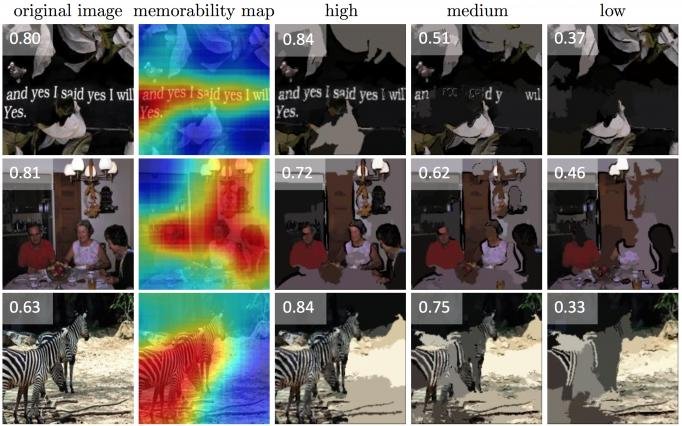The algorithm creates a heat map that marks the most memorable and most forgettable portions of each image. Photo by MIT News
BOSTON, Dec. 16 (UPI) -- Scientists at MIT's Computer Science and Artificial Intelligence Laboratory have designed a computer algorithm that measures how memorable an image is.
Feed it a photo from your Instagram feed and the "MemNet" algorithm will show you the portions of the image most likely to stick in the memories of viewers. A version of the algorithm is online for anyone to try.
Researchers recently detailed their technology in a new scientific paper.
MemNet is a deep-learning algorithm, meaning it is built to acquire and incorporate new information to improve its abilities without the manipulation or control of human programmers. Deep-learning technologies work by mimicking the neural pathways associated with human learning and repurposing them for various skill sets.
Ostensibly, MemNet will improve its ability to predict an image's indelibility simply doing its job and processing more information. Computer engineers designed MemNet and have now let it out into the world to be the best it can be.
MIT scientists first endowed MemNet with its skills by uploading thousands of images and associated data. The metadata included information about each image's popularity and emotional impact as determined by online viewers.
MemNet performs about as well as a human when asked to predict which photos are likely to be most memorable.
"Understanding memorability can help us make systems to capture the most important information, or, conversely, to store information that humans will most likely forget," lead study author Aditya Khosla, a grad student at CSAIL, told MIT News. "It's like having an instant focus group that tells you how likely it is that someone will remember a visual message."
Though MemNet is currently no better than humans at the task of measuring memorability, researchers expect it to get better over time. Its analysis is also able to pinpoint which portions of a picture are key to its memorability -- creating a heatmap that shows the memorable parts and boring parts of each image.
Eventually, the algorithm may be able to help marketers and movie makers edit their imagery to more effectively get inside the heads of their customers and viewers.
Or more benevolently, as MemNet learns, it can help others learn more efficiently, too.
"You might expect that people will acclimate and forget as many things as they did before, but our research suggests otherwise," Khosla said. "This means that we could potentially improve people's memory if we present them with memorable images."















